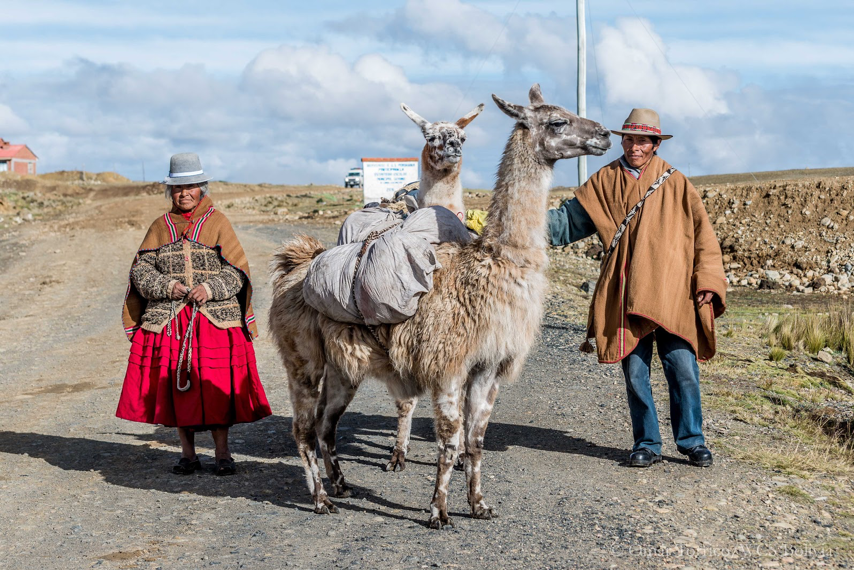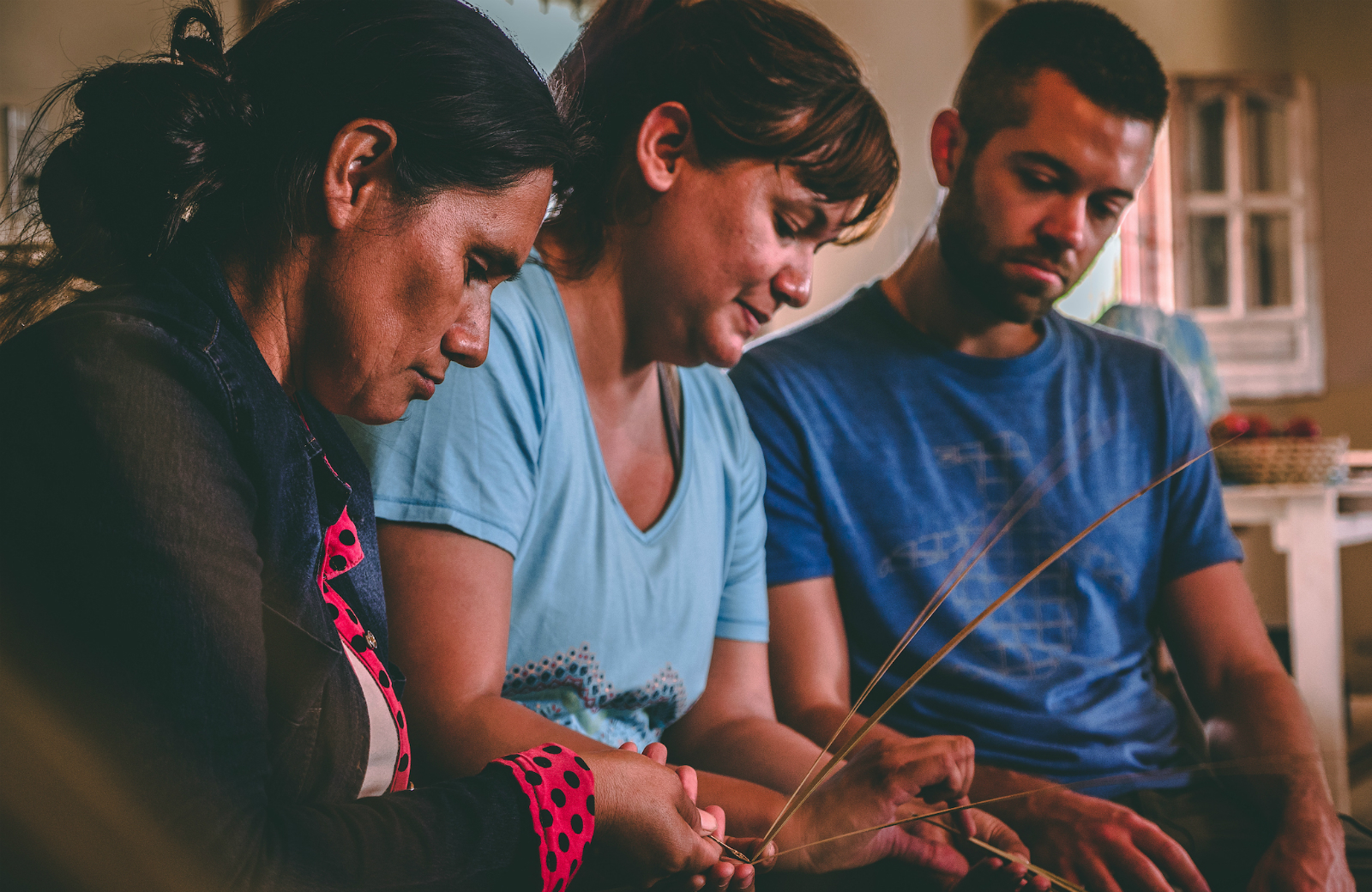For the past 20 or so years, community-based tourism (CBT) initiatives have been under development throughout the Andean highlands and Amazon lowlands of South America. The region’s immense cultural, biological, and geological diversity, combined with accelerating rates of rural-to-urban migration, deforestation, and climate change impacts, have made the region a focal point for CBT development.

Often associated with national parks and other types of protected areas, CBT projects support communities in becoming owners of their own tourism initiatives and are conceived as opportunities for increasing and more equitably distributing income in rural communities and adding value to natural areas and cultural landscapes. In turn, this can help mitigate rural-to-urban migration and preserve biodiversity and ancestral cultural practices. Today, the South American landscape is dotted with numerous communities, mostly rural, that have, to varying degrees, decided to pursue tourism as a way to stay in place and protect, preserve, and share their heritage.
Many CBT enterprises get their start with well-intentioned external financing from conservation organizations, development agencies, and other sources offering support for investment in training, infrastructure, activities development, marketing, and administration. Over time, however, as such resources diminish, communities often come to depend on tour operators in regional or national urban centers to help with marketing, communications, training, fundraising, and other types of assistance. Such partnerships and the work and time they imply may be unfamiliar to operators, who often have little experience working in direct and tangential ways with rural and often Indigenous communities.
Learning to collaborate with communities in diverse natural and cultural landscapes can be a challenging experience for everyone involved with CBT initiatives. Over the past 15 years of working throughout the Central Andes, first through developing the experiential education company La Paz on Foot and now as co-owner of Sendas Altas, I have gained invaluable collaboration skills working with communities in both the Andes and Amazon eco-regions. While the lessons I have learned through the work are discouraging at times, they nonetheless serve as guidance on how to increase the chances of CBT success in our part of the world. As travel agencies and independent travelers seek more authentic experiences, the following, albeit partial, list of the lessons learned may be useful for those interested in partnering with CBT destinations.
Lesson 1: Listen to and understand community partners.
It is important to learn how partner communities are organized, the cultural and political context in which they are enmeshed, and how they change over time. For example, what is the community’s annual calendar like? How are decisions made? How are administrative roles and responsibilities distributed and enacted? What kinds of opportunity costs does a project imply, both for community members and supporting partners? What are gender roles and who does what kind of work?
Answers to these questions will provide tour operators with invaluable insights into how to best work with communities and coordinate the programs they offer their clients as well as how to avoid misunderstandings and respect traditions. The best way to learn such information is by being present, listening to leaders and community members, and paying attention to how their daily lives outside of the project are structured.
Lesson 2: Ensure community interest and commitment.
In the case of new projects, make sure the communities you are working with want the CBT projects being proposed for development. This may sound obvious, however, all communities, even the smallest and most remote, are internally diverse despite what might appear to be relative homogeneity from the outside. Furthermore, people are busy, no matter where they are, and if there isn’t a true interest and commitment from a significant portion of the population, you are bound to encounter obstacles moving forward.
That is not to say projects have to count on full participation by all community members. On the contrary, many community members may be uninterested in participating, too busy, or otherwise unavailable. Nevertheless, it is of critical importance to ensure that there is agreement within the community, through their internal decision-making procedures, for the development of tourism activities by a distinct subgroup of inhabitants if not everyone chooses to participate.

Lesson 3: Expect delays and learn to work with them.
In the Central Andes and Amazon regions, most CBT projects are located in remote settings. Travel to and from sites can be complicated and affected by weather, accessibility, and the daily lives of community participants themselves. Those living in or close to sites can encounter delays related to escaped livestock, unforeseen travel to urban centers for medical concerns, community celebrations and other rituals, planting and harvesting responsibilities, and changing leadership roles, among other reasons. Those working on CBT initiatives in other parts of the world likely experience their own regional setbacks.
In addition (and especially in projects with external financing), budget administration, wire transfers, banking, and reporting responsibilities contribute to delays, even if they are efficiently executed by private operators. The degree to which partners can understand and adapt to delays and simultaneously help communities work with the unfamiliar timelines and deadlines associated with tourism directly influences the collaboration’s longevity and the construction of long-term relationships built on trust and collaborative work.
Lesson 4: Prepare to be a part of a CBT stakeholder network.
There are often many stakeholders that want CBT projects to succeed, starting, of course, with the community members themselves. Other stakeholders may include protected area personnel, conservation and poverty-alleviation organizations, tour operators, tourists, donors, and local governments.
However, many initiatives are developed and implemented with the support of a single local or international non-governmental organization and tend to become dependent on the NGO and a small number of other stakeholders, resulting in erratic, uncertain growth and restricted capacity for expansion. As private tour operators know, successful marketing and operation of itineraries depends on a wide array of partners, and the same applies to CBT.
In the spirit of CBT, the organizations and community members involved in initiative development and administration should be encouraged to develop marketing, training, and funding collaborations with multiple partners. Relationships with multiple tour operators are especially important because these are the people best positioned to introduce visitors to the project. They also have a serious interest in ensuring services and activities provided to their clients are consistently high quality and responsibly operated and sustained.
At the same time, communities investing their precious time and resources in CBT are especially motivated by seeing their work come to life when visitors arrive and have a memorable experience. When they can hear, feel, and see the results and benefits of their efforts, there is incentive to maintain this collaborative relationship.

Lesson 5: It gets complicated — but it is worth it!
The above four lessons reflect just a fraction of the complexity of developing CBT initiatives, at least in the Andes-Amazon region. To help navigate the process, it is essential to appreciate communities’ diversity. Imagine an NGO or tour operator coming into your neighborhood or town with the intention of engaging community members in some kind of cooperative tourism project. Would everyone agree? Who would participate? What questions would you ask? This exercise may help you understand the complex variables, expectations, hesitations, and perspectives that must be taken into consideration as projects are envisioned, designed, funded, and implemented.
It is in everyone’s best interest and to the benefit of natural and cultural landscapes where such projects emerge that CBT projects be sustainable because the stakes are high as destinations grapple with global trends in migration, urbanization, overtourism, climate change, biodiversity loss, and poverty. Tour operators play a fundamental role in contributing to the success of CBT initiatives, and we owe it to ourselves and our partners to do the best we can by building upon successes, failures, and all the lessons learned. By doing, we learn, and by learning, we do better.
